Top 7 Healthy Alternatives to Sugar
Before we look at our 7 favorite natural alternatives to sugar, it’s important to look at sugar itself and why you want to be avoiding it, we’ve also collated some mind-boggling stats on sugar for your reading pleasure!
If you enjoy this post be sure to follow us on Pinterest for more awesome content using the button below.
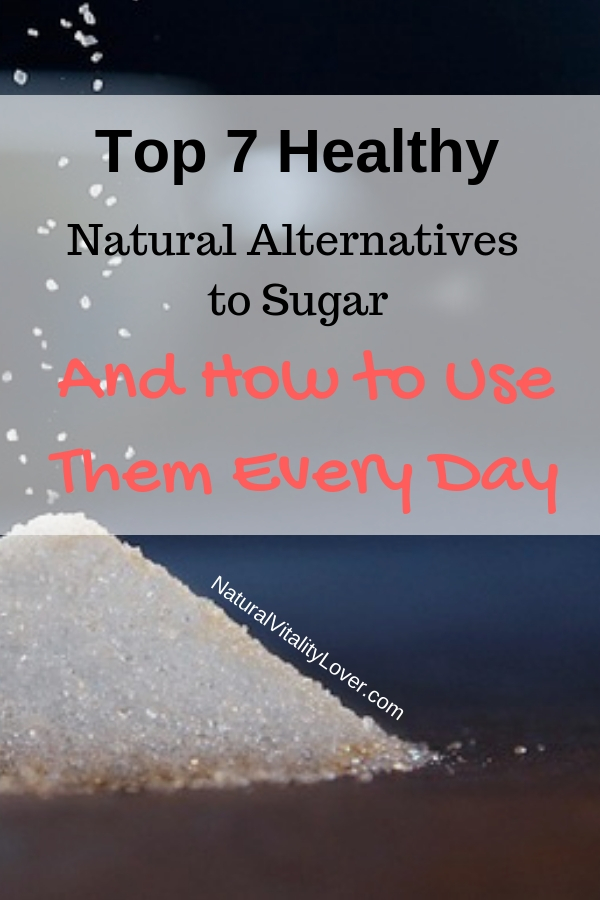
Some Key Stats Around Sugar
- The American Heart Association recommends that adult women eat a maximum of 6 teaspoons of sugar a day (about 24 grams) and men eat no more than 9 teaspoons per day (about 36 grams). Currently, the average amount of sugar consumed per day is over 30 teaspoons (about 120 grams).
- The only taste humans are born craving is sugar
- In 1822 the average American consumed 9 grams of sugar per day or 45 grams of sugar over 5 days. That’s the amount in one of today’s 12 oz. sodas.
- People consume about 500 additional calories per day from sugar which is the amount needed to gain a pound a week.
- A 2013 study found that around 180,000 deaths a year are linked to sweetened-beverage consumption.
- According to brain scans, sugar is as addictive as cocaine. It releases dopamine which is the same chemical released by addictive drugs, gambling, etc.
- There are at least 61 different names for sugar used on ingredient lists – they’re trying to hide it from you!
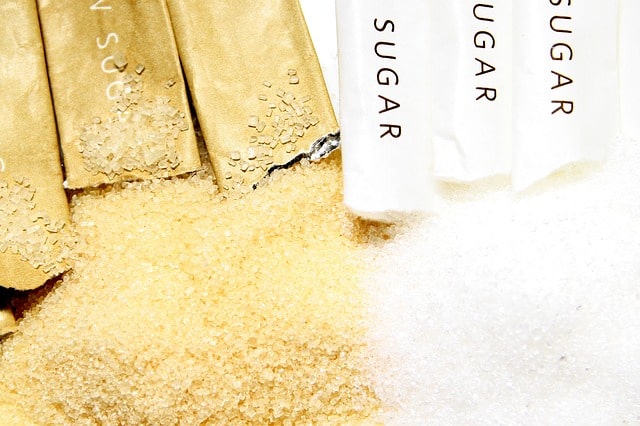
Why is Sugar Bad for You?
There are many links between refined sugar and diabetes, tooth decay, obesity, heart disease, cancer, and poor cognitive function.
Sugar interferes with the hormones in your body regulating hunger and satiety.
It harms your metabolism, which leads to increased insulin and fat storage. It’s well known that there is a strong link between sugar and obesity.
Beyond the above, sugar literally provides no other benefits to your body. It has no additional vitamins, minerals, or macro-nutrients. It is literally just sugar.
And because of its addictive nature, it’s really difficult to get out of your diet. But once you have, you’ll feel so much better and have higher energy levels, amongst other benefits.
Download Your FREE 3 Week Diet Weight Loss Guide Today!
Get your FREE guide to losing weight and maintaining weight loss with the 3 Week Diet.
Why We Don’t Recommend Artificial Sweeteners
While artificial sweaters like aspartame, sucralose, ACE K and saccharin have are still being debated in relation to their damaging side effects, the FDA has said they are “safe”.
However, known side effects from artificial sweeteners are broad, ranging from liver and kidney function impairments to headaches and migraines.
High fructose corn syrup (HFCS) is pushed as a “natural sweetener” which we don’t believe to be true. The majority of HFCS is produced from genetically engineered corn. HFCS has been linked to a number of health issues such as non-alcoholic fatty liver disease, digestive upset, and atherosclerosis.
To put it
While a friend and I were, dare I say it, “shredding” for a bodybuilding competition a few years back (I’ve competed in 2, on back to back weekends) I tried some sugar-free candy. Neither of us ate much of it and the next day we both woke up with incredible stomach cramps.
So, on a first-hand basis, I’ve felt some of the acute side effects of artificial sweeteners and that was the first and last time I tried them!
Our Top 7 Natural Alternatives to Sugar And How To Use Them
Raw Honey
Raw honey is packed with essential nutrients that help to neutralize free radicals such as iron, zinc, potassium, calcium, phosphorous, and vitamin B6.
Free radicals can be very harmful to our body as they are unstable molecules on the lookout for chemical components that other cells have but that they are missing.
Honey is excellent for promoting the growth of healthy gut bacteria which aids with
Studies are also finding a link between good gut health and mental wellbeing.
A tablespoon of raw honey has a smaller impact on your bodies glycemic load than a banana and only about 60 calories.
It’s important to note that similar to soy and apple cider vinegar, you need to consume a specific type of honey (raw honey) in order to get the health benefits.
Note that while honey is not

How to Use Raw Honey
Most people only think of using honey on their toast or in tea. Honey is a delicious sweetener on breakfast cereals, on yogurt, in salad dressings, and even in your morning coffee. If you find recipes that require molasses, honey is a good alternative.
One of the key things to remember when using raw honey is that it is raw – I know right, you’re probably thinking ‘duh!’
To reap all of the benefits you want to keep it that way! So, we don’t recommend using it in cooking or baking.
Our favorite raw honey
This raw wildflower honey comes from the sustainable, local apiaries in Ontario, Canada. Some honey makers will mix their honey with other sweeteners such as agave. However, Beekeeper’s Naturals is 100% raw honey goodness!
Because the fields the bees collect nectar from are filled with flavorsome flora, you will capture hints of subtle flavors such as mint, thyme, and other floral undertones.
Beekeeper’s Naturals have a few different flavor options available to you.

Stevia
Stevia is a plant native to South America that has been used as a natural sweetener to support healthy blood sugar levels and prompt weight loss for hundreds of years.
High-quality stevia is more than 200 times as sweet as sugar and is recommended as a sugar alternative by the American Diabetes Associated.
It has zero calories and
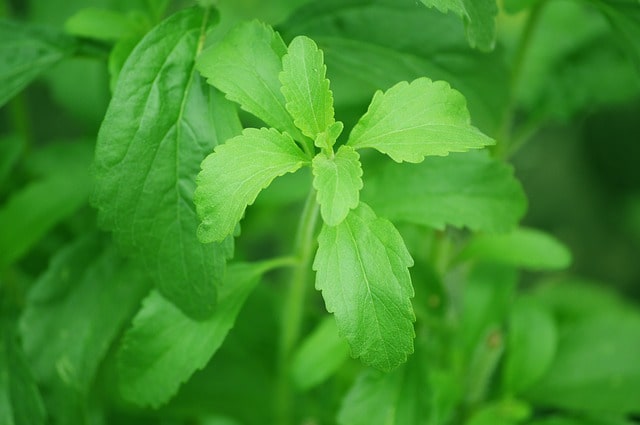
How to Use Stevia
One of the advantages of stevia over raw honey is that it is cooking friendly. Remember that it’s 200 times sweeter than sugar so factor that in when adding it to recipes!
When replacing sugar with stevia in baking it can cause an issue as sugar tends to provide some of the bulk. To make up for this we recommend using yogurt or coconut flour.
If you use coconut flour add it slowly as it tends to absorb a heap of moisture.
Our favorite stevia
This organic stevia is non-GMO powder based zero calorie sweetener easily dissolves in coffee and tea. This also means that its free from chemicals and flavor additives that can be present it others to mask some of the natural bitterness of stevia. Thrive have used an organic stevia extract that does that job, which is awesome.
It’s quite heavy hitting and so we recommend using a small amount to start with until you find your sweet spot.

Dates
Dates are packed full of magnesium, iron, copper, potassium and vitamin B6.
They are easily digestible and help to metabolize proteins, fats, and carbohydrates. There is evidence to suggest that dates help to reduce LDL cholesterol in the blood and reduce the risk of strokes.
If you’ve ever been to a whole foods café and had a ‘sugar-free’ treat, they normally use dates as one of the healthy sweeteners.
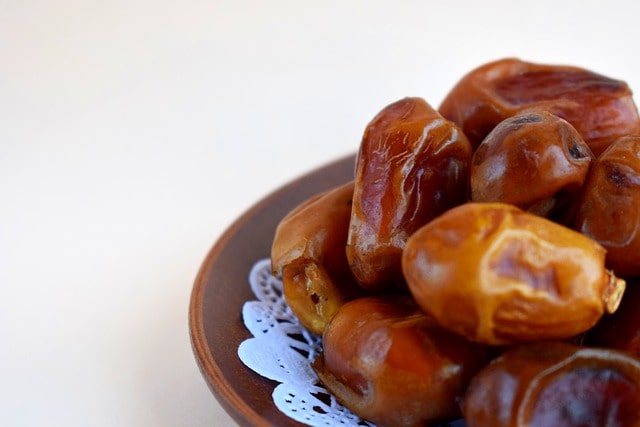
How to Use Dates
Obviously, you can just eat dates whole! They are delicious. But there are a few foods that you can have with dates to make a delicious healthy snack such as:
- Almonds
- Dark chocolate (there are brands such as this one that
are dairy and refined sugar-free) - Tahini
- Cashew nuts (we recommend making them a cream to dip the dates in, check out this recipe here)
When using dates in a recipe you first want to make a paste. Typically, you can replace sugar with date paste at a one to one ratio. The added bonus of using dates over something like stevia is that they keep the ‘bulk’.
To make a paste soak
Add the dates to your food processor (if you don’t have one we recommend this one) with a splash of the left-over water and blend until smooth.
Continue adding small amounts of water, say a tablespoon at a time, until you have a thick, rich paste. You’re looking for a peanut butter-like consistency.
Our Favourite Dates
Medjool dates are definitely our favorite type.
These soft, slightly sticky dates are fiber and nutrient-rich and are delectable by themselves.
We keep a packet of these in the freezer over summer for a cool treat. Don’t worry, dates don’t freeze solid due to their natural sugar content!
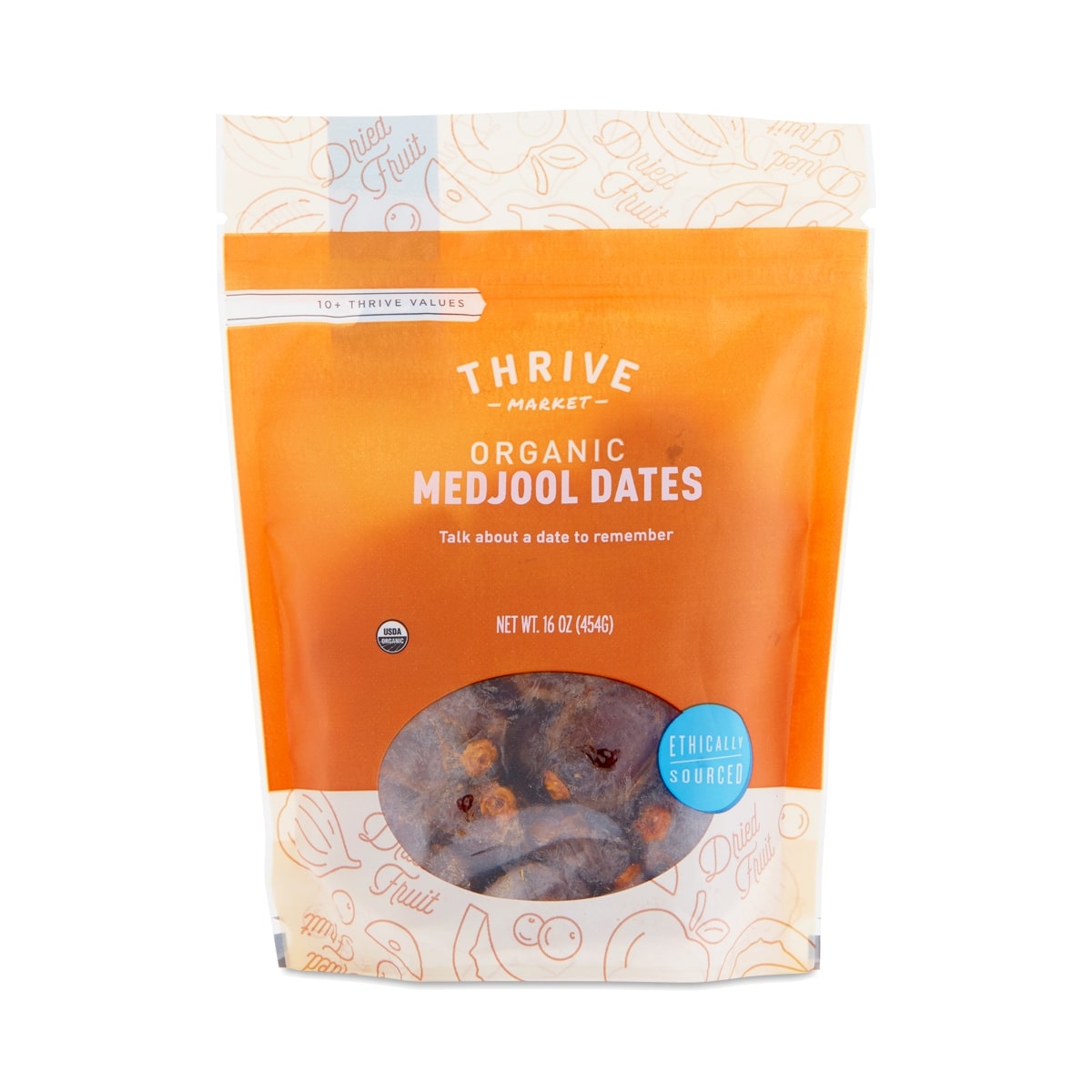
Coconut Sugar
Coconut has exploded in popularity in recent years for its wide-ranging health benefits. The benefits of its water, milk, flour, and flesh have been well documented.
Now, more and more people are using coconut sugar as their natural alternative to refined sugar. This is mostly due to its low glycemic load and rich mineral content.
Coconut sugar is loaded with phosphorous, antioxidants, potassium, calcium, zinc, iron, and polyphenols.
Extracted sap from the blooms of the coconut is heated and taken through a process of evaporation and voila! We have coconut sugar.

How to Use Coconut Sugar
Coconut sugar is one of the easier replacements for refined sugar. Simply replace it at a one to one ratio. The one drawback is that it is a bit more coarse than refined sugar, but that’s not a major. You can either give it a whirl in your food processor or dissolve it into the liquids called for in the recipe.
Just don’t use the dissolving technique for recipes that call for ingredients to be ‘creamed’ together with such as cakes.
Our Favourite Coconut Sugar
This non-GMO and low glycemic index coconut sugar has a similar taste to brown sugar and works great in recipes such as these:

Maple Syrup
Maple syrup is, along with dates, my favorite natural sweetener. It is a
- Drill a hole in the tree
- Hang a bucket to catch the sap
- Boil the sap to evaporate the water
- Filter out any sediment
Maple syrup is an incredible source of antioxidants, manganese, calcium, potassium
Two of the key things to know when selecting maple syrup is that most of the cheaper brands/options are actually maple flavored syrup, which is essentially just 100% refined sugar. The other thing is that grade B maple syrup, which is the darker of the two, actually contains more antioxidants.
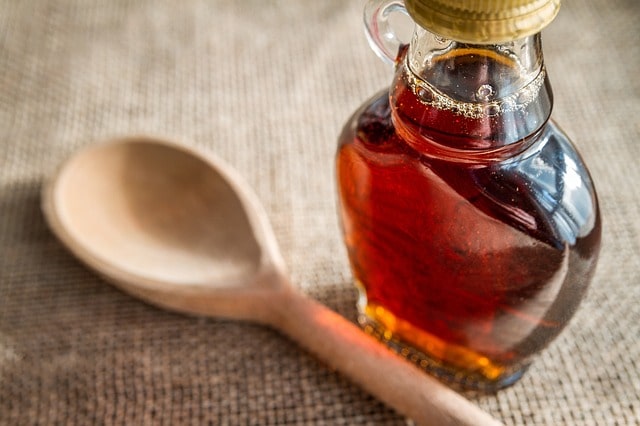
How to Use Maple Syrup
One of the best things about maple syrup is that its heat stable. This means you can use it in almost any application such as baking, sauces, glazes, and marinades. Personally, I use it to sweeten my homemade granola (or just grab one of these delicious ones prepared for you) and every now and then I’ll use it to sweeten my coffee.
To whip up a glaze, heat maple syrup in a saucepan until it’s just simmering and add coconut sugar. Stir until smooth and allow to cool slightly before glazing.
Our Favourite Maple Syrup
This certified pure Vermont maple syrup is as natural as syrup comes—straight from wild grown maple trees harvested in the Green Mountain state.
This robust Grade A syrup is one of the darkest available to consumers and is naturally organic, non-GMO, and gluten-free.

Balsamic Vinegar
Balsamic vinegar is rich in pepsin, which is an enzyme that helps to promote healthy digestion. It’s also rich in antioxidants, not to mention it’s absolutely delicious!
There are many different types of vinegar, some have a texture similar to water while others are thicker than maple syrup. A general rule of thumb is that the thicker the vinegar the sweeter it is.

How to Use Balsamic Glaze
Balsamic vinegar can be used as a glaze over food or simply drizzled over a dish straight from the bottle.
If making a glaze, simply simmer balsamic vinegar in a saucepan for about 15-30 minutes (this will depend on the type and quantity of vinegar). This process should reduce your vinegar to about a quarter of what you put in, i.e. 1 cup would become ¼ cup). Make sure you stir it regularly.
Once complete drizzle it over your meal to bring a bit of a tang and natural sweetness.
Our Favourite Balsamic Vinegar
This balsamic vinegar is made by a renowned vinegar producer in the region who is recognized for respecting local tradition.
Controlled and certified by a consortium of master tasters for its traditional zone of production, proportion of ingredients and overall quality, it embodies the complex taste profile preferred by food aficionados, creative chefs and foodies alike – anyone who wants to treat their taste buds to a perfectly balanced, rich tasting balsamic vinegar with less acidity.

Banana Puree
Banana is a heavyweight when it comes to nutrition. It is loaded with essential vitamins and minerals such as potassium, calcium, manganese, magnesium, iron, folate, niacin, riboflavin, and B6. These all contribute to the proper functioning of the body and keeping you healthy.
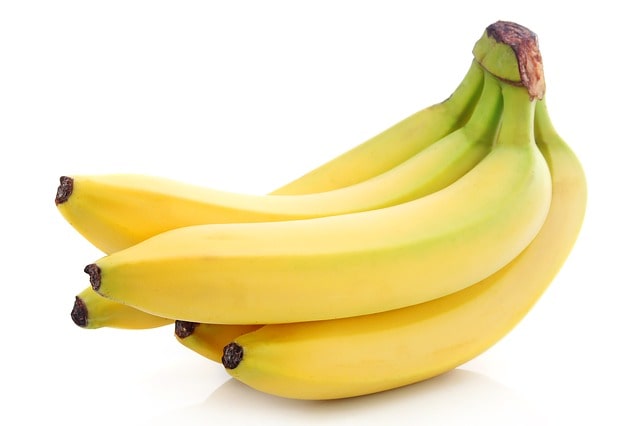
How to Use Banana Puree
The trick with using bananas as a natural alternative to sugar is to overripen them. This makes them a lot sweeter and also easier to puree. You might need to add a small amount of water to get a better consistency.
When replacing sugar in a recipe you can do so at a 1 to 1 ratio (i.e. 1 cup of sugar = 1 cup of banana puree).
Be sure not to leave the puree out as it will brown when exposed to air. Adding a few drops of lemon juice when pureeing can help to prevent this happening – just don’t add too much!
In Summary
In our current day and age, the consumption of sugar is skyrocketing due to its addictive nature. It is in the interest of food and beverage providers to pack as much sugar into food as possible as it will keep you buying their products.
Natural sugars do not pose the same risk as refined sugar as they come with a bunch of other nutrients and fiber. But also, the body handles different types of sugars in different ways – not all sugars are created equal.

The dangers of refined sugar are well documented which has led to the rise of artificial sweeteners. However, artificial sweeteners are questionable and have links to some pretty scary side effects.
The safest and healthiest option is to turn to get the sweetness you need in your life from natural sources and we recommend the following:
- Raw honey
- Stevia
- Dates
- Coconut sugar
- Maple syrup
- Balsamic vinegar
- Banana puree
We hope this article helps provide clarity on why you should be replacing sugar with these alternatives as well as some guidance on how to use them in your day to day life.
Leave a comment below if you enjoyed this article or have any questions you’d like answered!
If you enjoyed this post be sure to follow us on Pinterest for more awesome content using the button below.
RECENT BLOG POSTS
Why Don’t You Feel Dehydrated When You Know You’re Not Drinking Enough Water?
Most people think they are drinking enough water because we drink when we get thirsty. However, our bodies become imbalanced when the mechanism that signals thirst shuts down. In the following article, we hope you learn why your body stops signaling thirst, how to...
Top 5 Detox Waters for Preparing Your Body for Weight Loss
When it comes to conversations around weight loss water is generally not a topic of conversation. And that’s because it can be mundane – drink more they say – and that’s about where the conversation stops. Most people drink when they are thirsty and justify their...
5 Reasons Your Stressed-Out State Is Stopping You from Losing Weight
Have you ever found that despite your exercise and nutrition plans you’re still not reaching your weight loss goals? Maybe your struggling to stick to your exercise and nutrition plan. Or even worse – maybe your actually gaining weight. Have you ever sat back and...
Download Your FREE 3 Week Diet Weight Loss Guide Today!
Get your FREE guide to losing weight and maintaining weight loss with the 3 Week Diet.



